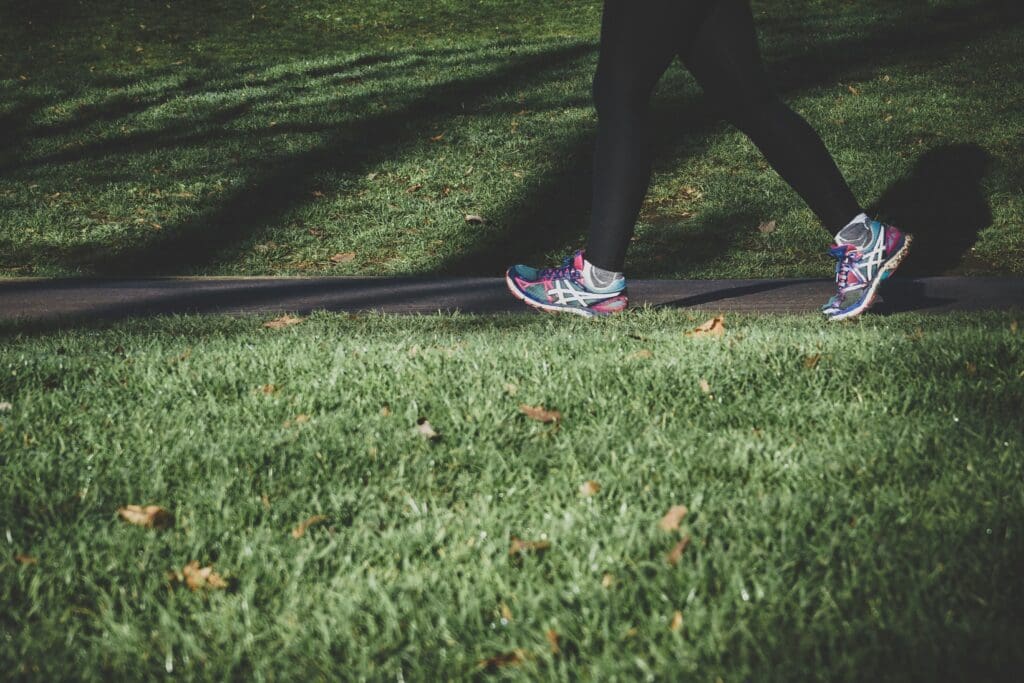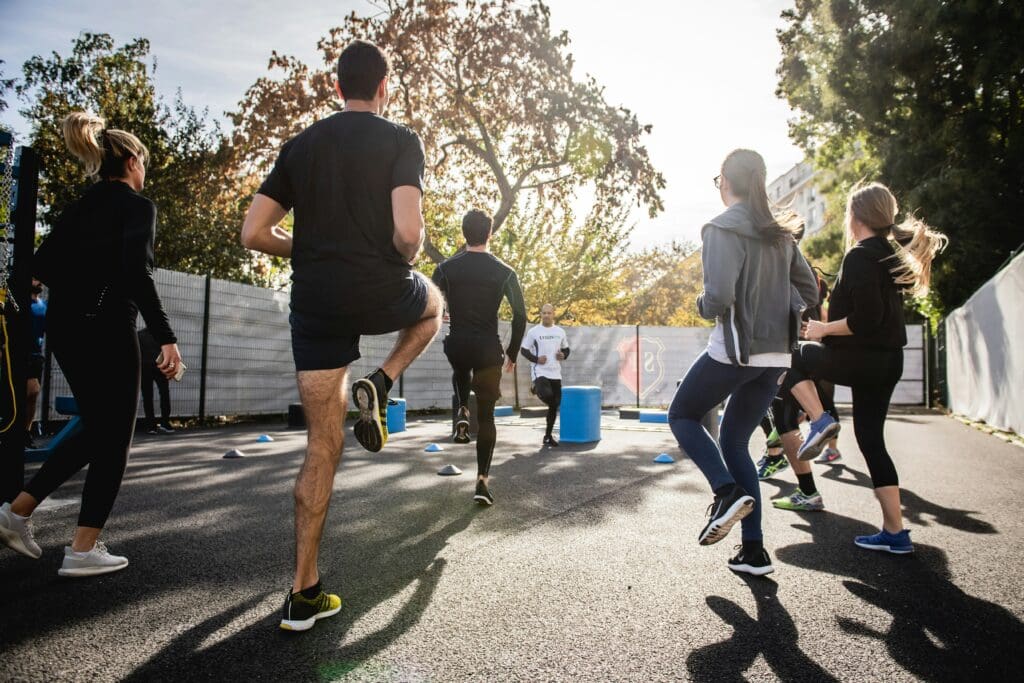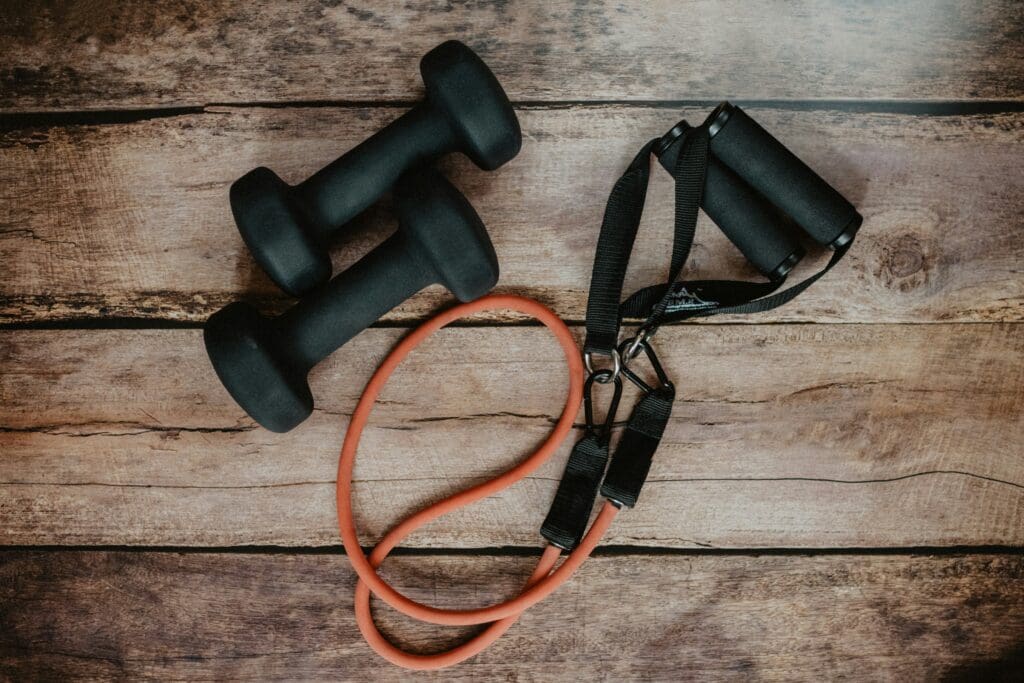Introduction to the Exercise Academic performance

The relationship between physical exercise and academic performance has garnered significant attention in recent years. Educators, researchers, and parents alike are increasingly exploring the correlations between students’ physical activity levels and their academic achievements. As educational institutions strive to create a holistic learning environment, understanding how exercise impacts cognitive functions and overall academic success becomes paramount.
Numerous studies have indicated a positive correlation between exercise and improved mental acuity. Engaging in physical activities has been shown to enhance concentration, memory retention, and problem-solving skills—all crucial components of effective learning. For instance, a study published in the journal Psychological Bulletin found that regular physical activity could lead to better academic outcomes by promoting healthier brain functions. These findings suggest that students who participate in sports or exercise routines may experience higher grades and improved cognitive abilities compared to their less active peers.
The bio-physiological effects of exercise also play a critical role in enhancing academic performance. Physical activity increases blood flow to the brain, facilitating nutrient delivery and the release of neurotransmitters that are essential for mood regulation and mental sharpness. This biological response not only bolsters focus during study sessions but may also alleviate stress and anxiety, common barriers to effective learning. Moreover, various educational initiatives and policies have begun to integrate physical activity into school curriculums, reflecting a growing recognition of the exercise-academic link.
In summary, the burgeoning interest in the connection between exercise and student performance highlights the importance of incorporating physical activity into students’ daily routines. Through ongoing research and practical applications, we can continue to unravel the complexities of how exercise influences academic success and ultimately pave the way for better learning outcomes in educational settings.
Understanding the Science: How Exercise Affects the Brain

Exercise has long been celebrated for its physical benefits, yet its profound impact on brain function offers compelling reasons for incorporating regular physical activity into students’ lives. Central to this relationship are neurotransmitters, which are chemicals that facilitate communication between neurons. Engaging in physical activity stimulates the release of neurotransmitters such as dopamine and serotonin, leading to enhanced mood and motivation. This immediate boost can create a more conducive environment for learning and academic performance, as a positive state of mind typically fosters better focus and engagement.
Another crucial element to consider is blood flow. Exercise promotes increased circulation, which transports oxygen and nutrients to the brain. Enhanced cerebral blood flow not only augments energy levels but also supports overall brain health. With improved vascularization, brain function benefits from greater efficiency and connectivity, which are essential for optimizing cognitive tasks such as problem-solving, critical thinking, and memory retention. Research indicates that higher levels of physical activity correlate with enhanced cognitive abilities, particularly in children and adolescents during their formative educational years.
Furthermore, the process of neurogenesis, the birth of new neurons, underscores the pivotal role exercise plays in brain development and cognitive function. Regular physical activity has been associated with increased neurogenesis in the hippocampus, a brain region vital for learning and memory. This is especially pertinent for students, as better memory retention directly translates to improved academic performance. Studies have shown that physically active students tend to excel in school environments, maintaining their attention longer and displaying superior processing speeds in relation to their less active peers.
In conclusion, the scientific evidence clearly illustrates that exercise positively impacts various aspects of brain function, making it an invaluable tool for students striving for academic excellence.
Types of Exercise: Which Ones Are Most Effective for Students?

Physical activity is essential for overall well-being, and its varied forms can significantly influence academic performance among students. Research indicates that different types of exercise contribute uniquely to cognitive functions and academic success. Aerobic exercise, which includes activities like running, cycling, and swimming, has shown promising effects on students’ concentration and memory. Engaging in aerobic workouts improves cardiovascular health, leading to better oxygen flow to the brain, which is crucial for enhancing cognitive performance. Studies suggest that students who participate in regular aerobic activities demonstrate increases in grades, particularly in subjects requiring critical thinking and problem-solving skills.
Another effective category of exercise is strength training. Activities such as weightlifting and resistance training are not only vital for physical health but also play a role in mental acuity. Research suggests that students who engage in strength training experience significant improvements in focus and perseverance. This form of exercise is particularly beneficial for adolescents, as it fosters self-discipline and resilience—qualities that translate well into academic settings. Furthermore, integrating strength training into their routines can promote better stress management and overall mood enhancement.
Flexibility exercises, including yoga and stretching routines, also present unique advantages for students. While they may not directly boost academic performance, flexibility exercises contribute to improved mental clarity and reduced anxiety, thereby creating a conducive environment for learning. These exercises encourage mindfulness, which can lead to enhanced focus and attention in class. The ideal frequency and duration of these exercises often depend on individual schedules; however, experts recommend engaging in different types of exercises at least three to five times a week for optimal benefits.
In conclusion, understanding the various types of exercise and their specific benefits can empower students to make informed decisions about their physical activity. By integrating a balanced mix of aerobic, strength, and flexibility exercises into their routines, students can enhance their academic performance and achieve better grades.
The Quantity of Exercise: How Much is Necessary?

Exercise plays a pivotal role in enhancing various aspects of life, including academic performance. Understanding the recommended amounts of physical activity for diverse age groups is essential to determine how much exercise students should engage in to optimize their learning capabilities. According to the Centers for Disease Control and Prevention (CDC), children and adolescents aged 6 to 17 should aim for at least 60 minutes of moderate to vigorous physical activity every day. This can involve different forms of exercise, such as walking, running, swimming, or playing sports. By meeting this recommendation, students not only improve their physical health but also increase their cognitive function, which is crucial for academic success.
As children develop, consistent exercise can help enhance focus, retention, and overall academic performance. Research indicates that students who regularly engage in physical activity demonstrate higher levels of concentration and better classroom behavior. Moreover, the American Heart Association supports the guideline that children should participate in structured activities, which may include team sports or fitness classes, to foster both cooperation and individual achievement. For adolescents aged 18 and older, the recommendation shifts to at least 150 minutes of moderate aerobic exercise each week or 75 minutes of vigorous activity, emphasizing that maintaining a routine of physical activity remains critical as they transition into higher education.
Incorporating exercise into daily routines can create a healthier lifestyle while simultaneously supporting academic goals. The correlation between the quantity of exercise and academic performance becomes increasingly evident when considering that engaging regularly in physical activity can reduce stress levels, improve mood, and enhance brain functions associated with memory and learning. Therefore, students should target these recommended amounts of exercise not merely for physical fitness but for their overall academic excellence.
Case Studies: Real-Life Examples of Exercise and Academic Success

Numerous case studies have showcased the positive correlation between physical activity and academic performance among students. One notable example is an initiative implemented in a Texas school district, where a comprehensive physical education program was introduced. This program not only included traditional sports but also emphasized various forms of exercise, such as yoga and dance. Over the course of two academic years, educators observed a marked improvement in students’ grade point averages as participation in these exercise programs increased. Teachers noted that students exhibited improved focus, leading to enhanced performance not only in physical education but across all subjects.
Another compelling case can be found in a New York City high school, where students undertook a daily jogging routine interspersed with academic workshops. This program, known as “Run and Revise,” encouraged students to engage in physical activity for thirty minutes before attending their classes. The outcome was impressive; students reported a significant increase in energy levels and concentration, contributing to higher test scores in mathematics and science. Educators highlighted that the reduced anxiety levels among students during assessments coincided with their increased physical activity, underscoring the importance of exercise in fostering a conducive learning environment.
Furthermore, a community-based study in a rural area involved a partnership between local health organizations and schools to promote after-school sports programs. This initiative targeted underperforming students, encouraging them to participate in various athletic activities. The results revealed a substantial improvement in academic engagement and performance in language arts and history. Participants exhibited a greater sense of discipline and teamwork, which translated into better collaborative work during class projects.
These case studies demonstrate that the integration of exercise programs into academic settings can significantly impact students’ academic success. By enhancing physical activity levels, schools foster not only improved grades but also a more vibrant educational experience.
Exercise and Mental Health: The Hidden Benefits

Engaging in regular physical activity has long been recognized for its numerous health benefits, yet its profound impact on mental health, particularly among students, is often overlooked. Exercise serves not only as a means to improve physical fitness but also as a powerful tool for enhancing psychological well-being. As students navigate academic pressures and the stresses associated with their studies, integrating exercise into their routine can yield significant improvements in mental health, ultimately fostering better academic performance.
One of the most pronounced benefits of exercise is its ability to decrease stress levels. When students engage in physical activities, their bodies release endorphins, neurotransmitters that help elevate mood and promote a sense of relaxation. Regular exercise is associated with reduced feelings of anxiety and depression, which are common among individuals facing academic challenges. By alleviating these mental health concerns, students are better equipped to focus on their studies, leading to heightened concentration and productivity.
Moreover, the social aspects of exercise can also contribute positively to mental health. Participation in group sports or fitness classes fosters a sense of community and belonging, reducing feelings of isolation that can often accompany student life. These social interactions can decrease anxiety and improve overall emotional resilience, which is essential for maintaining a balanced state of mind while pursuing academic goals.
The link between exercise and enhanced cognitive function is well-documented. Physical activity stimulates brain health by promoting increased blood flow to the brain, which can enhance memory and concentration. As students experience improved mental clarity, they are more likely to absorb information, engage with their coursework, and excel academically. Overall, the relationship between exercise and mental health is crucial, and students who prioritize physical activity may find themselves not only feeling better but also achieving better grades as a result of their improved mental state.
Building a Balanced Routine

Integrating exercise into a daily routine can significantly enhance a student’s academic performance while simultaneously promoting physical health. To achieve a harmonious balance, it is crucial to establish a structured schedule that accommodates both academic responsibilities and physical activity. One effective strategy is to prioritize tasks by creating a weekly planner that allocates specific times for studying along with designated slots for exercise. This proactive approach enables students to visually comprehend their commitments, making it easier to avoid last-minute stress and foster a healthier lifestyle.
Another essential aspect of balancing exercise with academic work is to determine the optimal times for physical activity. For many students, engaging in exercise during breaks between study sessions can serve as a revitalizing pause. Short, 20-30 minute workouts can help enhance focus and energy levels, allowing for improved productivity when returning to study tasks. Additionally, students may consider scheduling more intense workout sessions on weekends or during periods when academic pressure is lower. This strategic method not only aligns with academic demands but also infuses regular movement into their routine, critical for maintaining overall well-being.
Furthermore, leveraging technology can streamline the integration of exercise and studying. Many fitness applications allow students to set reminders for workout sessions, motivating them to maintain their physical activity regimen while managing their study flow. Additionally, forming study groups that incorporate physical activity, such as group walks or outdoor study sessions, can provide both academic support and exercise in tandem. This synergy not only fosters camaraderie but also reinforces accountability, as peers encourage one another to prioritize their health alongside their academic aspirations.
Ultimately, by thoughtfully weaving together exercise and academic duties, students can unlock a pathway to improved grades while enhancing their physical fitness—a comprehensive approach that rewards both body and mind.
Barriers to Exercise for Students and How to Overcome Them

Maintaining a regular exercise routine can be a daunting task for students due to various barriers that often hinder their ability to engage in physical activity. Time constraints represent one of the most significant challenges; balancing academics, extracurricular activities, and social commitments can leave little room for exercise. Additionally, students may struggle with motivation, particularly when faced with fatigue from demanding coursework or the allure of leisure activities. Furthermore, limited access to resources such as gym facilities or sports equipment can further complicate their ability to engage in regular physical activity.
Addressing these barriers requires strategic planning and actionable solutions. To combat time constraints, students can prioritize their schedules by carving out specific times dedicated to exercise, treating these appointments with the same importance as academic commitments. Incorporating short bursts of physical activity, such as quick workouts or active breaks during study sessions, can be beneficial and more manageable than longer, traditional exercise sessions.
To enhance motivation, students may benefit from setting clear, achievable fitness goals. This can be supported by partnering with friends or joining group activities to foster a sense of accountability and camaraderie. Engaging in enjoyable forms of exercise, whether through sports, dance, or even walking, can also elevate motivation and make the experience more pleasurable.
Lastly, in terms of resource availability, students can explore alternative options, such as outdoor activities or home workouts that do not require expensive equipment. Utilizing online workouts or community resources can also be a cost-effective way to stay active. By effectively addressing these barriers, students can not only enhance their physical health but also unlock the academic benefits associated with regular exercise, leading to improved performance and overall well-being.
Conclusion: The Path to Better Grades Through Exercise

In summary, the interplay between physical activity and academic performance is profound and multifaceted. Engaging in regular exercise not only promotes physical well-being but also enhances cognitive functions that are critical for academic success. Numerous studies have demonstrated that students who participate in consistent physical activities tend to exhibit improved concentration, better memory retention, and elevated mood levels, all of which contribute positively to learning outcomes. As such, the role of exercise extends beyond simply promoting a healthy lifestyle; it is a vital component of achieving better grades.
The scientific evidence illustrates that the benefits of exercise can be observed across various age groups and academic settings. By incorporating exercise into daily routines, students are likely to experience enhanced brain function, increased energy levels, and reduced stress. These factors culminate in better engagement during classes and improved performance on examinations. Furthermore, maintaining physical fitness can instill a sense of discipline and time management, essential qualities for academic achievement.
To cultivate a culture of health and success, it is important for both educational institutions and parents to encourage students to prioritize physical activity. Programs such as after-school sports, exercise clubs, or even casual group activities can foster an environment where exercise becomes an integral part of daily life. As students learn to balance studies with physical pursuits, they can unlock their full potential, ultimately leading to an improvement in academic results.
By recognizing the critical relationship between exercise and academic performance, individuals can harness the power of physical activity as a strategic tool for enhancing their educational journeys. Embracing this holistic approach will not only yield better grades but also contribute to the overall development of well-rounded individuals, prepared to face the challenges of the future.

Pingback: Fitness Attractiveness: Decadent Training Tips